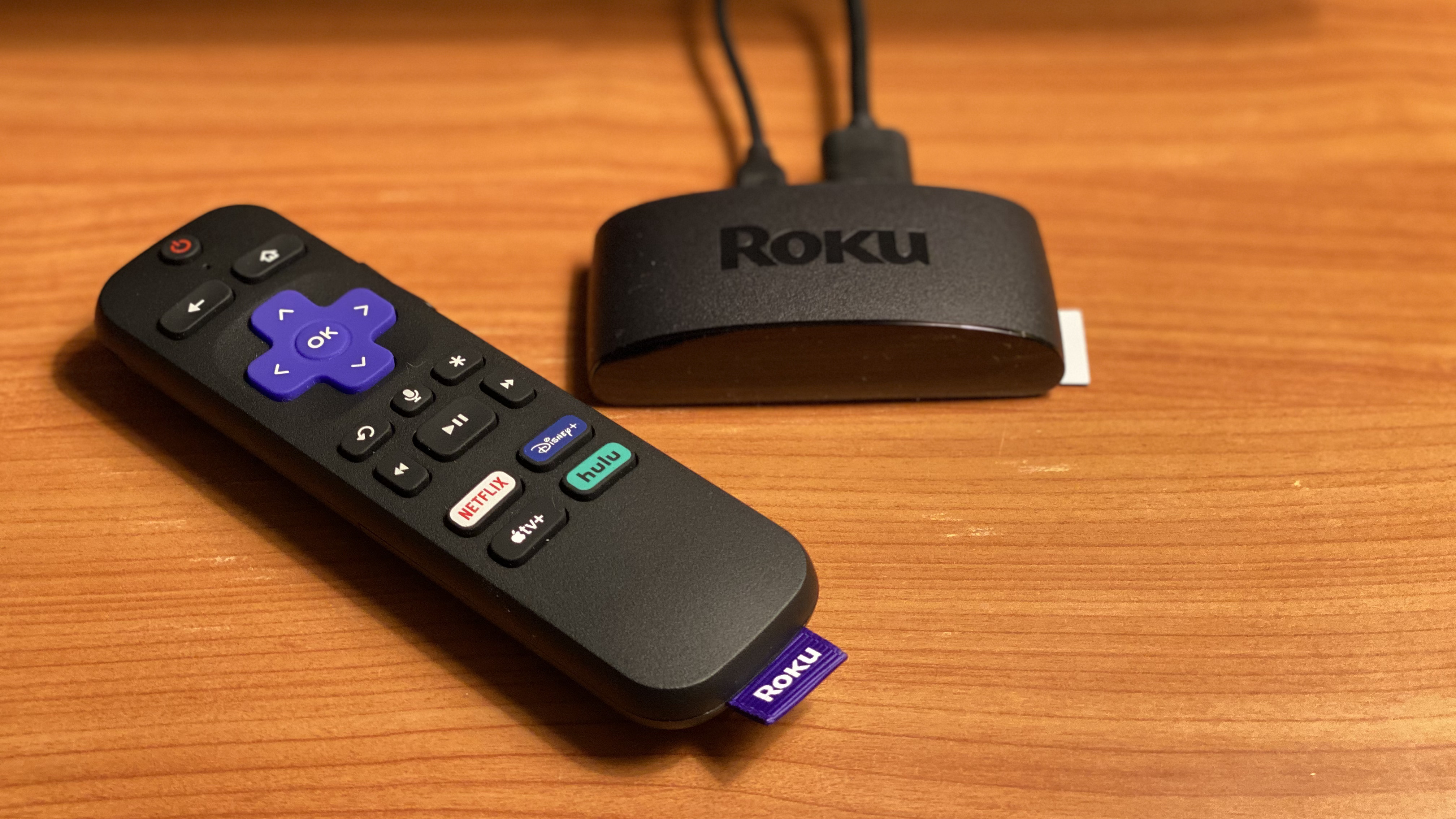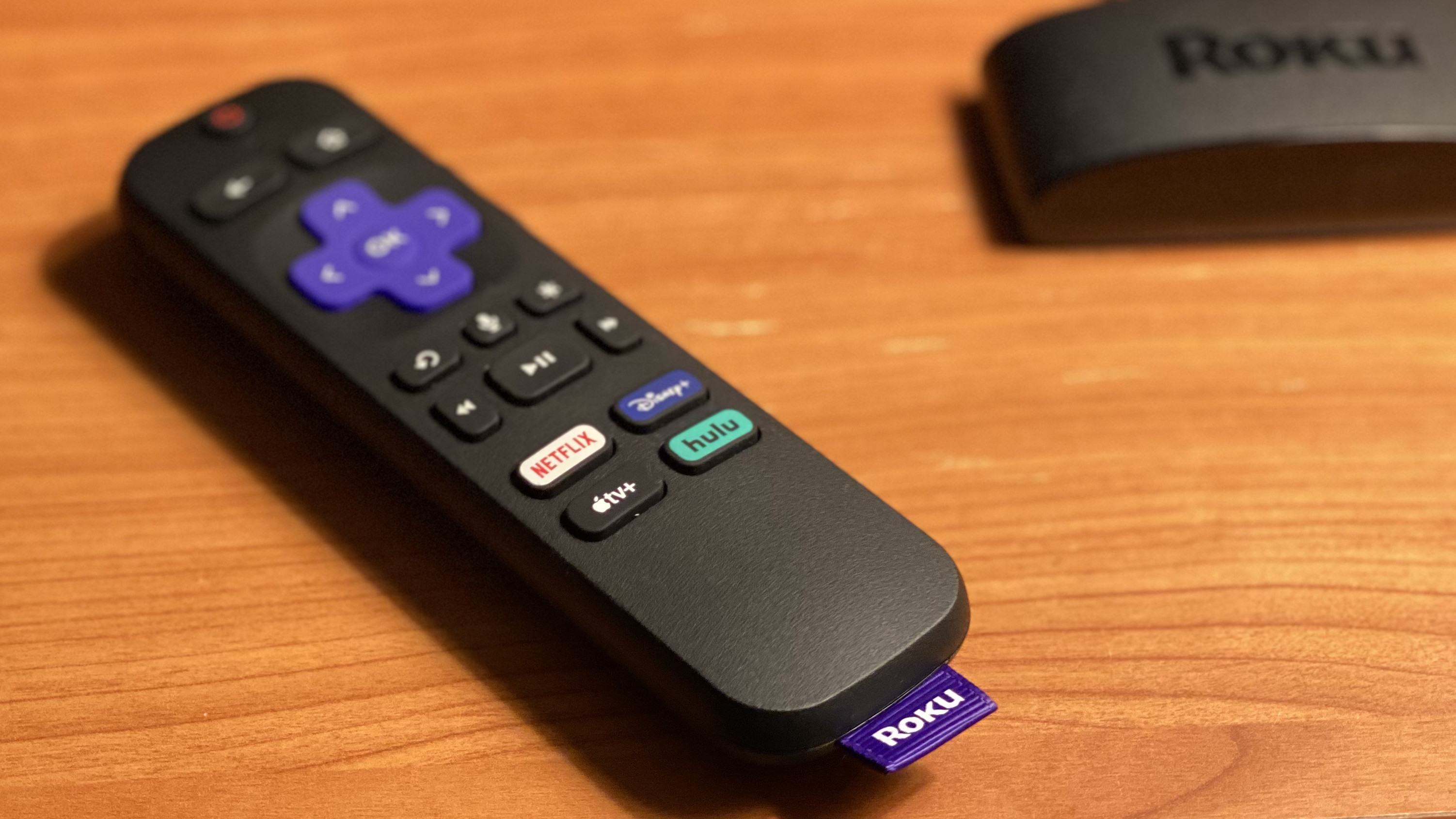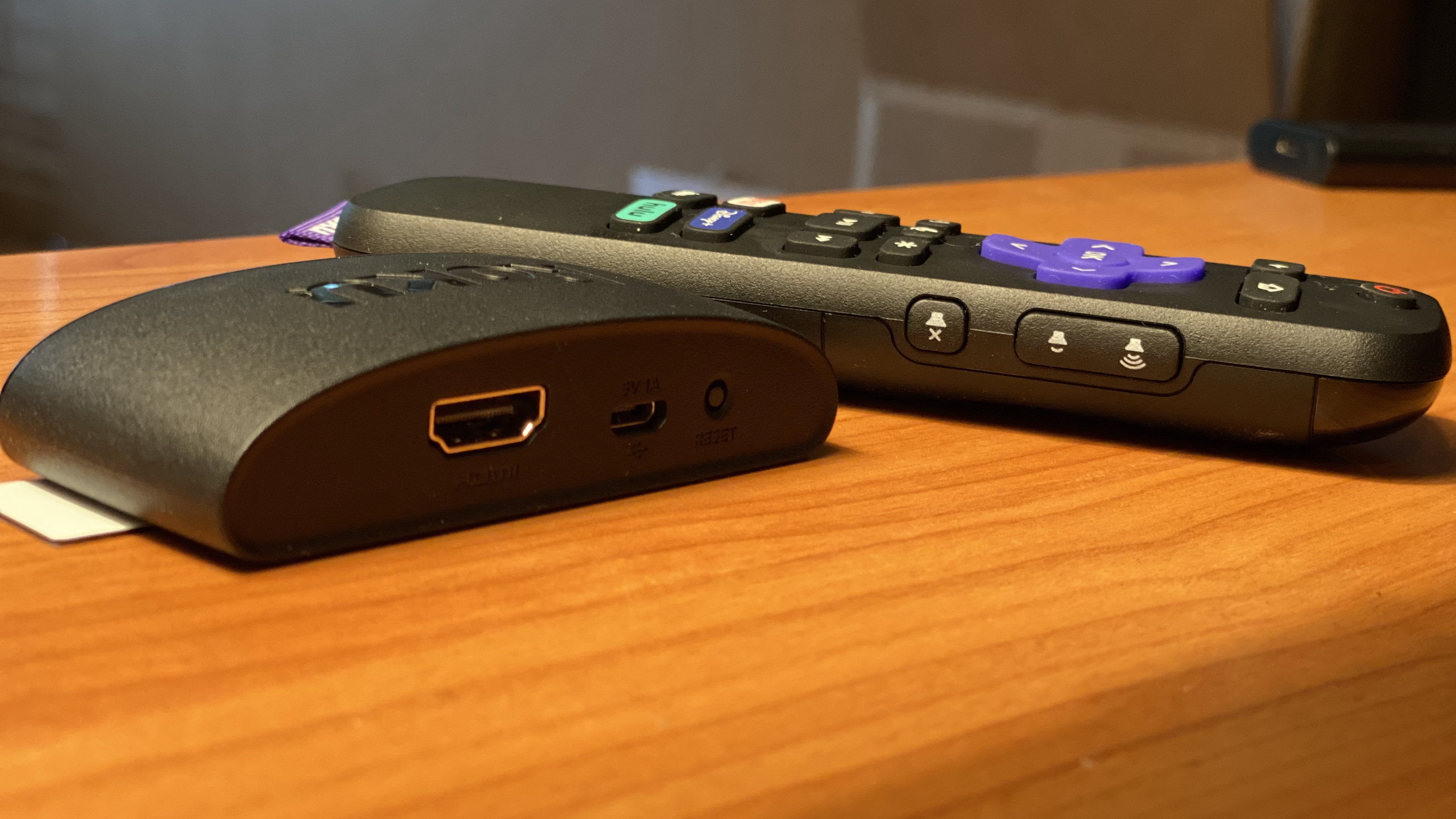Roku Express 4K+ (2021)
The new Roku Express 4K+ (2021) is proof that, if you wait long enough for a technology to proliferate, you can eventually buy it at an incredibly low price. Such was the case of SSDs, USBs and high-capacity RAM, and now the same is true for 4K HDR streaming devices.
What the Roku Express 4K+ offers is 4K HDR streaming at up to 60 frames per second over HDMI 2.0b with support for HDR10+. There’s no Dolby Atmos support or Dolby Vision support, two high-end formats for spatial audio and HDR respectively, but you’re getting most of the features of streaming devices that used to cost over $100 for just $39.99.
While it’s missing those high-end formats that the Roku Ultra has, and its range is a bit shorter than the slightly more expensive Roku Streaming Stick+, the Roku Express 4K+ is Roku’s answer to the Amazon Fire TV Stick 4K and Chromecast with Google TV – it’s affordable, has all the same streaming apps and it comes with a remote.
We’ll need to spend another week with this new Roku to really put it through its paces, but after spending a weekend with it, we’re nearly convinced that this is the budget 4K streaming device that Roku has been looking to make for the last decade, now in its perfected form.
Roku Express 4K+ price and release date
The Roku Express 4K+ is available starting in mid-May in the US for $39.99 (around £28, AU$50), while a cheaper version called the Roku Express 4K will be available exclusively at Walmart for $35 around the same time – unfortunately, neither version has been announced for the UK or Australia, but just as it was with the Roku Express, there’s a chance that it could come there in the future.
The key difference between the two models is that the Roku Express 4K+ (reviewed here) uses a Bluetooth remote while the standard Express 4K uses an IR remote. For an extra $5 it’s definitely worth buying the Bluetooth remote that can control the TV.
Where things become slightly more confusing is when you talk about the new Roku lineup. It starts with the basic HD-only Roku Express ($29.99) that’s followed by the new Express 4K+ ($39.99), but then there’s the Roku Streaming Stick+ ($49.99) that also streams in 4K and often only costs $39.99 when it’s on sale and the Roku Ultra that also streams 4K content – but can do Dolby Atmos and Dolby Vision as well. That’s not even mentioning the soundbar-streaming player hybrids, the Roku Streambar and Roku Streambar Pro (formerly called the Roku Smart Soundbar) or TVs that come with Roku built-in that can sometimes be found for around $150 like the TCL 3-Series TVs.
Long story short? Roku makes great products but its product lineup is getting a bit hard to follow – even for someone whose job is to cover streaming devices.

Design
Despite the potential to cause some confusion, it makes sense why Roku named it the Roku Express 4K+ – it looks exactly like the Roku Express.
At 0.7 x 3.4 x 1.4 inches (H x W x D) it’s nearly the same size as the original Roku Streaming Stick and, funny enough, it’s even smaller than the remote that comes inside the box. But, the benefit to its small form factor is that you can throw it in a bag or store it on your media shelf without it taking up too much real estate.
Roku also includes a two-foot-long HDMI cable in every box, a remote and double-sided adhesive tape that will allow you to stick the Express 4K+ onto your TV or on any surface. The inclusion of all these accessories is actually somewhat surprising – while other manufacturers are all too happy to send you out the door without all the necessary equipment in hand, the Roku Express 4K+ is a complete kit.
The only corner that Roku cuts here is that the HDMI cord is on the shorter side. It’s long enough to reach the ports of a 65-inch screen while still laying flat on the table, but just barely. If you had a larger TV or if you wanted to keep the Express 4K+ anywhere other than right underneath the TV, you’re going to need another cord.
We do have to give Roku some props on the remote that comes with a built-in microphone as well as volume buttons and a power button that can control the TV over HDMI-CEC. It’s not quite as good as the new Roku Voice Remote Pro that has two programmable buttons, a headphone jack and a mid-range microphone array that can pick up your voice from across the room, but considering that it only costs $5 more than the basic IR remote, it’s a steal.

Performance
Inside every Roku Express 4K+ is a brand-new System-on-a-Chip that runs Roku OS. Roku OS, as ever, remains a paragon of egalitarianism and simplicity, and it runs smoothly here to boot.
The only problem we have with Roku OS is that it’s not very sleek. We’ve seen the same tile-based app home screen for most of the last decade with few overall changes. In some ways, that’s great for users who hate change, but it has meant that Roku OS does look a bit less sleek than, say, Google TV, tvOS on Apple TV 4K or even the new Amazon Fire TV.
Starting up the Roku Express 4K+ requires you to sign into a Roku account (it’s easy if you already have one and slightly more complicated if you don’t) before selecting which streaming service you want preloaded on the device. You can take your pick of nearly every major streaming service that’s out there right now including newcomers like Apple TV, Disney Plus, Peacock and Paramount Plus as well as returning classics like Netflix, Hulu, Amazon, HBO Max and more.
The only app that’s currently missing from the mix is YouTube TV which is absent due to an ongoing dispute between Roku and Google. It will likely return in the near future, but its absence might give some folks some pause before plunking down on the new streamer.

Switching from one app to another happens fairly quickly, and there’s only a second or two where you might have to wait for a menu to populate with images. That said, how quickly streams buffer and menus populate with images will all depend on your internet connection speed – so make sure you pay for more than 15Mbps before buying a 4K streaming device.
Even if you pay for a great connection, however, you probably won’t get all of that bandwidth over to the Roku Express 4K+. For example, we have a 800Mbps fiber connection running into the router at our house – but the Roku Express 4K+ can only use about 40Mbps. That’s due, in part, to the location of the Roku Express 4K+ (it’s located two rooms away from the router) and the design decision to pack in the wireless antenna into the housing of the player instead of along the power cord like we saw with the Roku Streaming Stick+.
The good news? Even with only 40Mbps, streams buffered quickly and remained at 4K HDR quality for the entirety of our streaming sessions. That’s no guarantee you’ll get the same results, but it’s a good indicator for us that the Roku Express 4K+ is as good as the Roku Ultra at holding a connection, even if it can’t handle Dolby Vision or Dolby Atmos.
Early verdict
We’ll have to spend more time evaluating how it makes content look on the TV, but from a purely functional perspective, the Roku Express 4K+ has worked great so far. We’ve been able to stream several shows and movies without a hitch, and while it would’ve been nice to watch a few of those in Dolby Vision, having them in 4K HDR is still better than HD SDR.
Roku’s smart platform isn’t as sleek as Amazon Fire TV or Google TV, but for $40 (around £28, AU$50) the Roku Express 4K+ is shaping up to be a solid option in the budget streaming device category.
- Ready to ditch cable? Check out our guide to the best streaming devices
0 comments:
Post a Comment